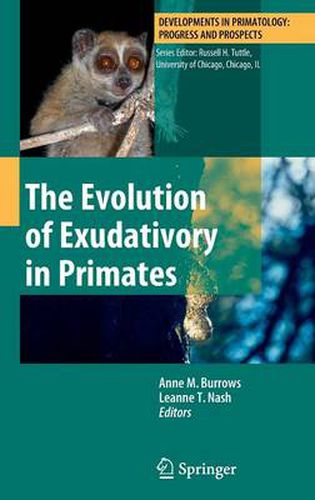Readings Newsletter
Become a Readings Member to make your shopping experience even easier.
Sign in or sign up for free!
You’re not far away from qualifying for FREE standard shipping within Australia
You’ve qualified for FREE standard shipping within Australia
The cart is loading…






This title is printed to order. This book may have been self-published. If so, we cannot guarantee the quality of the content. In the main most books will have gone through the editing process however some may not. We therefore suggest that you be aware of this before ordering this book. If in doubt check either the author or publisher’s details as we are unable to accept any returns unless they are faulty. Please contact us if you have any questions.
I first became involved in research into primate behavior and ecology in 1968, over 40 years ago, driven by a quest for a better understanding of the natural context of primate evolution. At that time, it was virtually unknown that primates can exploit exudates as a major food source. I was certainly unaware of this myself. By good fortune, I was awarded a postdoctoral grant to work on lemurs with Jean-Jacques Petter in the general ecology division of the Museum National d'Histoire Naturelle in Brunoy, France. This provided the launching-pad for my first field study of lesser mouse lemurs in Madagascar, during which I gained my initial inklings of exudate feeding. It was also in Brunoy that I met up with Pierre Charles- Dominique, who introduced me to pioneering observations of exudate feeding he had made during his field study of five lorisiform species in Gabon. This opened my eyes to a key feeding adaptation that has now been reported for at least 69 primate species in 12 families (Smith, Chap. 3) - almost 20% of extant primate species. So exudativory is now firmly established as a dietary category for p- mates, alongside the long-recognized classes of faunivory (including insectivory), frugivory, and folivory. Soon after I encountered Charles-Dominique, he published the first synthetic account of his Gabon field study in a French language journal (Charles-Dominique 1971).
$9.00 standard shipping within Australia
FREE standard shipping within Australia for orders over $100.00
Express & International shipping calculated at checkout
This title is printed to order. This book may have been self-published. If so, we cannot guarantee the quality of the content. In the main most books will have gone through the editing process however some may not. We therefore suggest that you be aware of this before ordering this book. If in doubt check either the author or publisher’s details as we are unable to accept any returns unless they are faulty. Please contact us if you have any questions.
I first became involved in research into primate behavior and ecology in 1968, over 40 years ago, driven by a quest for a better understanding of the natural context of primate evolution. At that time, it was virtually unknown that primates can exploit exudates as a major food source. I was certainly unaware of this myself. By good fortune, I was awarded a postdoctoral grant to work on lemurs with Jean-Jacques Petter in the general ecology division of the Museum National d'Histoire Naturelle in Brunoy, France. This provided the launching-pad for my first field study of lesser mouse lemurs in Madagascar, during which I gained my initial inklings of exudate feeding. It was also in Brunoy that I met up with Pierre Charles- Dominique, who introduced me to pioneering observations of exudate feeding he had made during his field study of five lorisiform species in Gabon. This opened my eyes to a key feeding adaptation that has now been reported for at least 69 primate species in 12 families (Smith, Chap. 3) - almost 20% of extant primate species. So exudativory is now firmly established as a dietary category for p- mates, alongside the long-recognized classes of faunivory (including insectivory), frugivory, and folivory. Soon after I encountered Charles-Dominique, he published the first synthetic account of his Gabon field study in a French language journal (Charles-Dominique 1971).